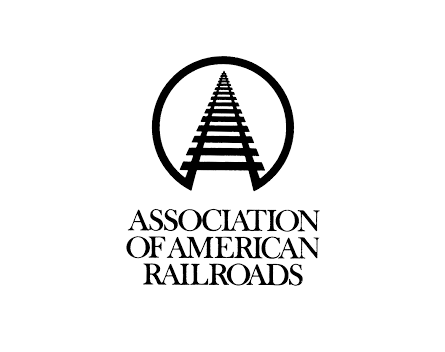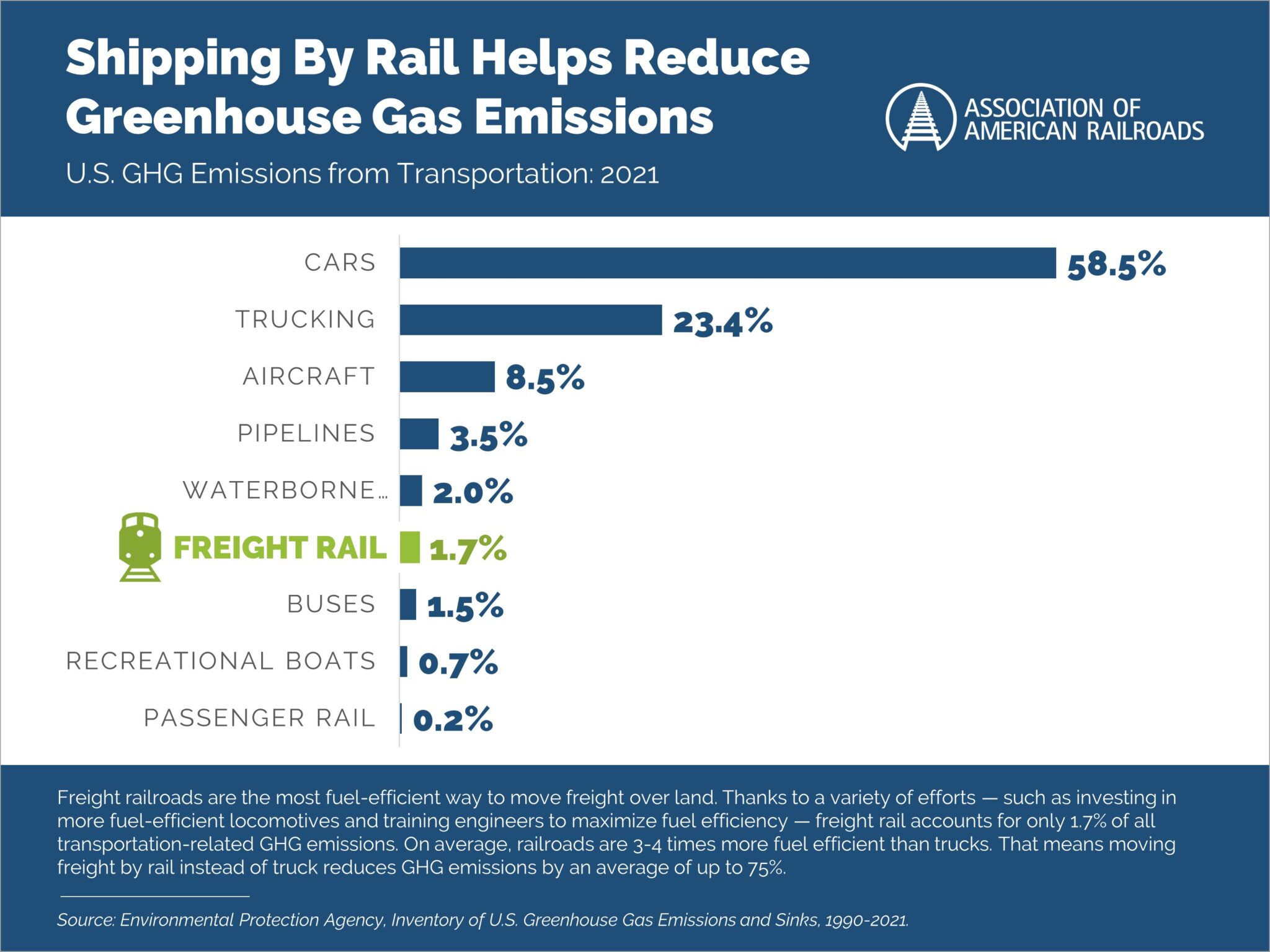In a new paper, industry outlines policies to help the U.S. meet climate commitments and build a resilient rail network.
WASHINGTON, DC – June 13, 2023 – The Association of American Railroads (AAR) outlined how smart, pro-innovation federal policies can further advance the rail industry’s efforts to effectively combat climate change. As railroads and policymakers drive toward greater sustainability, policies must capitalize on today’s opportunities to reduce emissions while also making the right investments to unlock tomorrow’s most promising solutions.
“The need to reduce emissions is not only an environmental issue; it’s an economic issue,” said AAR President and CEO Ian Jefferies. “This has never been more clear. Policymakers must engage in partnership with the private sector to advance pragmatic, solutions-oriented policies that support immediate emissions reductions and encourage longer-term, sustainable solutions. As the most efficient way to move freight over land, rail is a critical partner in driving further gains.”
Earlier this year, the Biden Administration noted in its joint agency transportation decarbonization blueprint that “rail makes up approximately 28% of U.S. freight movement by ton-miles but only accounts for about 2% of total U.S. transportation emissions.”
At the same time, the industry is working to achieve greater sustainability in its operations and further reduce emissions. Each of North America’s largest railroads are part of the Science Based Targets Initiative, which aims to drive private sector climate solutions capable of mitigating the impacts of temperature rise. Last month, numerous Class I freight railroads were ranked by Forbes among the 100 U.S. companies best positioned to reach net-zero by 2050.
As the Administration works to implement its Blueprint vision, partnerships with industry will be essential to decarbonizing transportation and helping transition the nation toward a cleaner, more sustainable economy. The newly released AAR paper creates a framework of economically grounded solutions to support rail and the nation’s progress towards lower-or-zero-carbon choices. Specifically, railroads called on policymakers to:
- Support low- and zero-emissions locomotive research.
- Help railroad partners decarbonize.
- Allow railroads to transition their locomotive fleets when zero-emission technologies are commercially viable as well as operationally safe and reliable.
- Pursue policies that recognize the value of rail as a low-carbon transportation solution.
- Empower railroads to make operational decisions to maximize fuel usage and meet growing freight demand.
- Further promote a broad-based, economy-wide transition to net-zero emissions.
- Encourage testing of new safety technologies.
- Embrace permitting reform.
Rail plays an outsized role in keeping the nation’s climate goals on track and the global supply chain moving. Currently, trains can move one ton of freight nearly 500 miles on a single gallon of fuel. That’s roughly the distance from Washington, D.C. to Boston.
Railroads are working each day to drive those fuel efficiency numbers even higher. Last year, U.S. freight railroads consumed 765 million fewer gallons of fuel and emitted 8.6 million fewer tons of CO2 than they would have if their fuel efficiency had remained constant since 2000.

